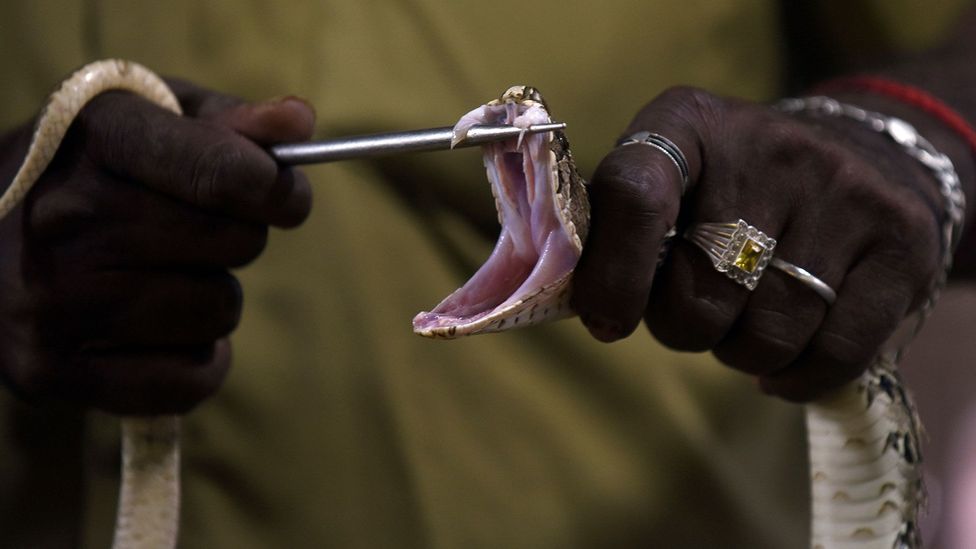Snakes kill 50 000 people every year

Snakes: A Deadly Threat Claiming 50,000 Lives Each Year

Every year, the silent and venomous predator known as snakes causes an astonishing 50,000 fatalities worldwide, making them one of the deadliest animals to humans. Their lethal strikes and venomous fangs have instilled fear in the hearts of millions, and understanding the true extent of this danger is essential for our safety.
Snakes are a diverse group of reptiles that can be found in almost every corner of the globe. With over 3,600 known species, they come in all shapes, sizes, and various colors, allowing them to adapt and thrive in almost any habitat. While the majority of snakes are non-venomous and harmless to humans, a significant number possess a venomous bite that can be fatal.

Different snake species utilize their venom differently, with some injecting potent neurotoxins that immobilize their prey, while others release hemotoxins that disrupt blood clotting and lead to internal bleeding. Regardless of their method, the consequences of a venomous snakebite are often grave, particularly in regions where access to medical treatment is limited.
The burden of snakebites is distributed unevenly across the globe, with the majority occurring in Sub-Saharan Africa, South Asia, and Southeast Asia. These regions are home to highly venomous snakes such as puff adders, cobras, and saw-scaled vipers, which are responsible for a significant proportion of snakebite-related deaths.
Recognizing the signs of a venomous snakebite is crucial for prompt medical intervention. Symptoms may vary depending on the venom, but commonly include severe pain at the bite site, swelling, blurred vision, difficulty breathing, paralysis, and even organ failure. If left untreated, these symptoms can quickly lead to a loss of consciousness and ultimately death.
Efforts are being made to combat this ongoing threat. Antivenom, a serum derived from animal blood, is the primary method for treating snakebites, neutralizing the toxic effects of snake venom. However, widespread availability and accessibility of antivenom remains a challenge, particularly in rural and remote areas where snakebites are more prevalent.
Education and awareness play a vital role in preventing snakebite-related fatalities. It is essential for individuals living in high-risk regions to be knowledgeable about snake behavior and prevention techniques. Simple precautions such as wearing protective clothing, using snake-proof footwear, and being cautious when walking in snake habitats can significantly reduce the risk of encountering a venomous snake.
In conclusion, snakes are not to be underestimated. As one of the deadliest animals to humans, they claim the lives of approximately 50,000 people each year. While snakebites remain a significant public health issue, ongoing efforts to improve antivenom accessibility and education on preventive measures can help mitigate this threat. Stay informed, stay vigilant, and respect the lethal potential of these remarkable reptiles.
Sources: Wikipedia - List of Deadliest Animals to Humans
Related Posts
Quick Links
Legal Stuff

